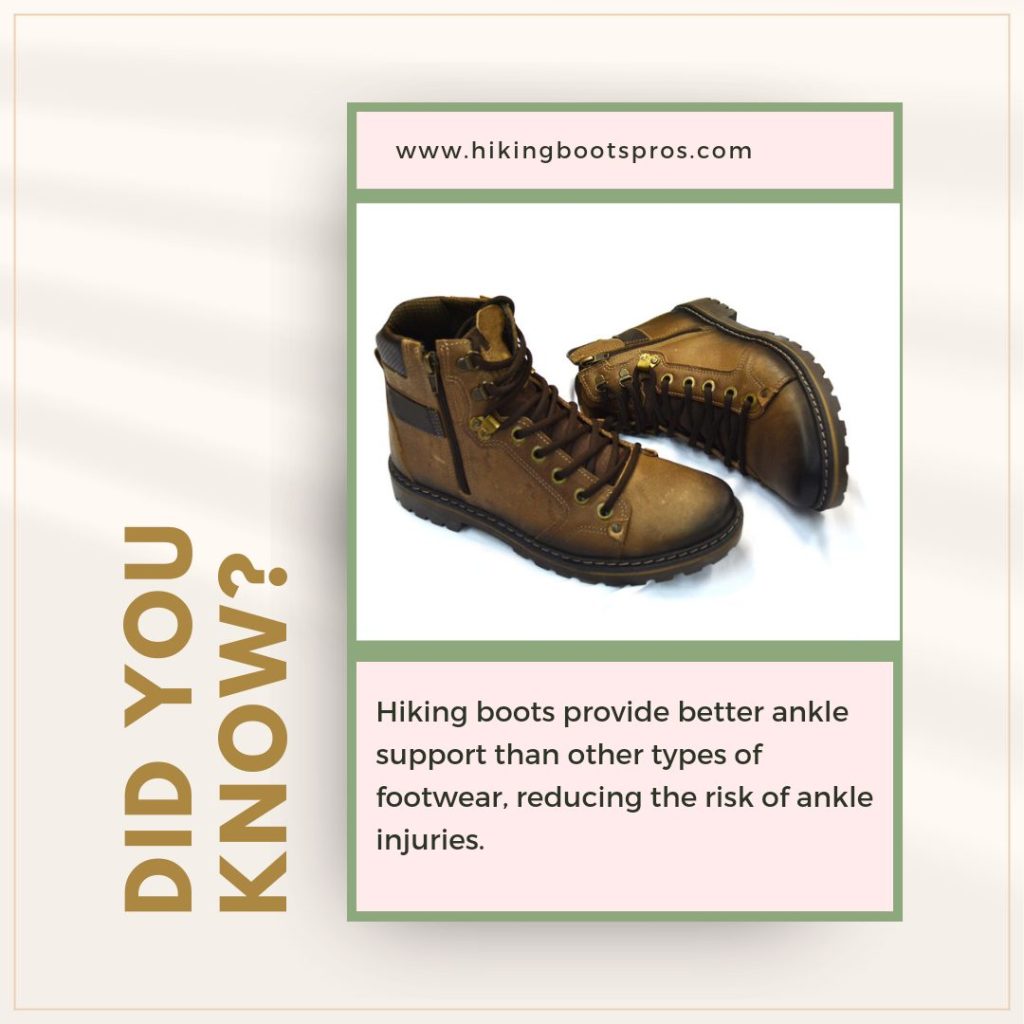Are hiking boots a must? It’s a question that often arises when planning for an outdoor adventure. While some may argue that any comfortable pair of shoes can do the job, there are several benefits to investing in a good pair of hiking boots. Not only do they offer protection and support, but they also provide traction on rough terrain, durability and longevity, and ankle support and stability.
In this blog post, we’ll explore the advantages of hiking boots and the alternatives available. We’ll also guide you on how to choose the right footwear for your hike and provide tips for maintaining your hiking boots.
Are Hiking Boots a Must?
Hiking boots are not always necessary, but they are highly recommended for any hiker who is serious about their outdoor adventures. Hiking boots are designed to provide the necessary support and protection for your feet, which is especially important when hiking on uneven terrain.

They offer a range of features that make them suitable for different types of hikes, including waterproofing, insulation, and breathability. Additionally, hiking boots provide better ankle support than other types of footwear, reducing the risk of ankle injuries.
While some may argue that any comfortable pair of shoes can be worn for hiking, it’s important to remember that hiking boots are specifically designed for the outdoors. They are made with durable materials that can withstand the wear and tear of the rugged terrain. Hiking boots also have thicker soles and provide better traction, making them ideal for slippery or rocky trails.
What are the Benefits of Hiking Boots?
Hiking boots are a type of footwear that is specifically designed for outdoor activities like hiking, backpacking, and mountaineering. Unlike regular shoes, hiking boots provide added protection, support, and comfort for your feet, ankles, and lower legs. In this section, we will explore the benefits of wearing hiking boots.
Protection and support
Hiking boots offer superior protection and support for your feet, which is especially important when hiking on rough terrain. They are designed with durable materials that can withstand the harsh conditions of the outdoors.
Hiking boots provide a thicker sole than regular shoes, which helps to absorb shock and reduce the impact on your feet. This feature can help prevent injuries such as plantar fasciitis, shin splints, and other foot-related problems.
Traction on rough terrain
One of the primary benefits of hiking boots is their superior traction on rough terrain. The soles of hiking boots are designed with deep treads that provide excellent grip on slippery or rocky trails. This feature helps to reduce the risk of slipping or falling, which can be especially dangerous on steep or uneven terrain.
Durability and longevity
Hiking boots are made with durable materials that can withstand the wear and tear of the outdoors. They are designed to last for many years and can handle the harsh conditions of the wilderness. While they may be more expensive than regular shoes, the investment is well worth it, considering the longevity of the product.
Ankle support and stability
Hiking boots provide superior ankle support and stability compared to other types of footwear. This feature is especially important when hiking on uneven terrain, as it helps to reduce the risk of ankle injuries. The high-cut design of hiking boots provides added support to the ankle, reducing the risk of twisting or spraining your ankle.
What are the Alternatives to Hiking Boots?
While hiking boots may be the go-to footwear for many hikers, there are several alternatives that can provide the necessary comfort and support for your outdoor adventure.
Trail Running Shoes
Trail running shoes are a lightweight and flexible option for hiking. They provide good traction and stability, making them suitable for rocky or uneven terrain. Trail running shoes also allow for better mobility and flexibility, making them a popular choice for hikers who prefer a more natural feel.
Hiking Sandals
Hiking sandals are a comfortable and breathable alternative to hiking boots. They are great for hiking in hot weather or water-based activities such as river crossings. Hiking sandals come with adjustable straps and shock-absorbing soles to ensure a secure fit and cushioning.
Lightweight Hiking Shoes
Lightweight hiking shoes are similar to hiking boots but are less bulky and more comfortable. They provide good traction and support, making them suitable for hiking on trails or uneven terrain. Lightweight hiking shoes are a great option for hikers who prefer a lighter load and more flexibility.
Tips for Maintaining Your Footwear
Proper maintenance of your hiking footwear can extend its lifespan and ensure its effectiveness on future hikes. Clean and Dry Your Footwear After each hike, it is essential to clean and dry your footwear to prevent mold and mildew growth. Use a soft brush to remove any dirt or debris, and allow your shoes to air dry before storing them.
Store Your Footwear Properly Store your hiking footwear in a cool, dry place, away from direct sunlight. Avoid storing them in damp areas, which can lead to mold and mildew growth. Stuff your shoes with newspaper to help them retain their shape. Rotate Your Footwear It is recommended to rotate your hiking footwear to prevent excessive wear and tear on one pair. Alternate between two pairs of shoes to give them time to rest and recover after each hike.
How to Choose the Right Footwear for Your Hike?
Choosing the right footwear is one of the most important factors to consider when planning a hike. The right footwear can make a significant difference in your comfort and performance on the trail. There are a few things to keep in mind when choosing the right footwear for your hike.
Based on Terrain and Weather
The first and most important factor to consider when selecting hiking shoes is the terrain and weather of your destination. For example, if you’re hiking on rugged, rocky terrain with steep inclines and declines, you’ll want a pair of sturdy boots that offer excellent ankle support.
On the other hand, if you’re hiking on flat or well-groomed trails, lightweight hiking shoes or even hiking sandals may suffice. Similarly, if you’re hiking in cold or wet weather, waterproof boots will keep your feet dry and warm. In contrast, for hot and dry weather, breathable shoes will help keep your feet cool and comfortable.
Personal Preferences and Comfort
Another essential factor to consider when selecting hiking shoes is personal preference and comfort. Some hikers prefer the support and stability of hiking boots, while others opt for the lightweight flexibility of hiking shoes or sandals. The right fit is critical, and it’s essential to try on several pairs to determine which one feels the most comfortable. It’s also important to consider the width of the shoe, as some hikers may need a wider or narrower fit than others.
Hiking Experience
Lastly, it’s crucial to consider your hiking experience when choosing the right footwear. Beginner hikers may not require specialized footwear and may opt for a comfortable pair of sneakers or athletic shoes.
However, experienced hikers or those planning more extended hikes may want to invest in a more durable and specialized pair of hiking shoes or boots. It’s essential to consider the length and difficulty of your hike, as well as your familiarity with the terrain, before making a final decision.
Read about: How can I make my boots less painful
Conclusion
In conclusion, hiking boots may be the traditional choice for hikers, but they are not a must. There are several alternatives that can provide the necessary comfort and support for your outdoor adventure.
Whether you choose trail running shoes, hiking sandals, lightweight hiking shoes, or trekking poles, the most important thing is to choose footwear that is suitable for your needs and preferences. Remember to properly maintain your hiking footwear to ensure its longevity and effectiveness on future hikes.
FAQs
You can wear regular sneakers for shorter and easier hikes on well-maintained trails. However, they may not provide the same level of support, protection, and traction as hiking boots, and you may be more susceptible to injuries or discomfort.
Yes, there are different types of hiking boots designed for different types of terrain and hiking activities. Some are designed for day hikes on well-maintained trails, while others are made for backpacking or hiking on rugged terrain.

Tyler Looney is an avid hiking enthusiast and the author of HikingBootsPros.com, a website dedicated to providing helpful insights and advice on choosing the best hiking boots. His expertise and passion for hiking have made him a valuable resource for both beginner and experienced hikers alike.

